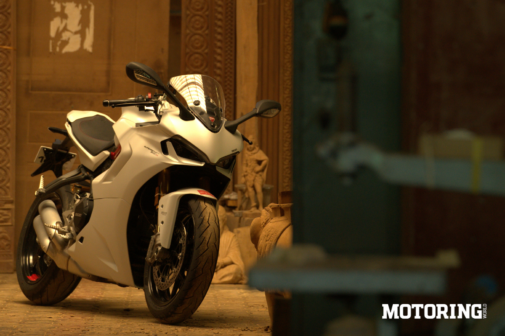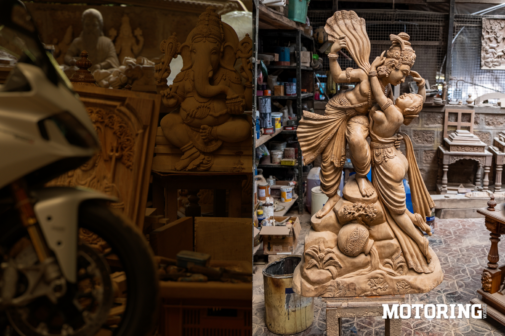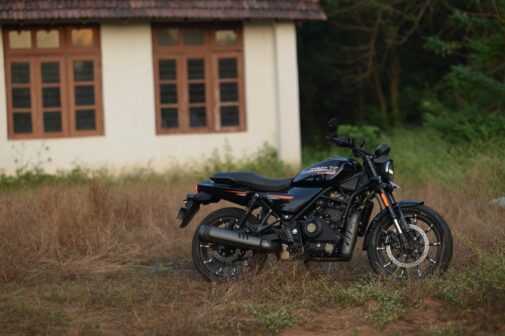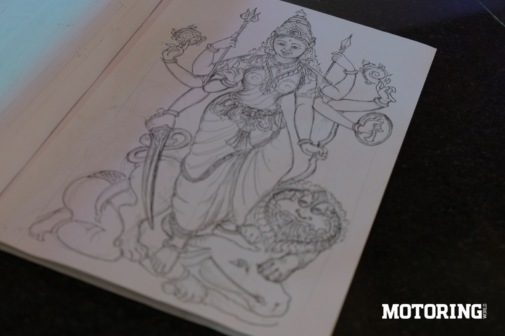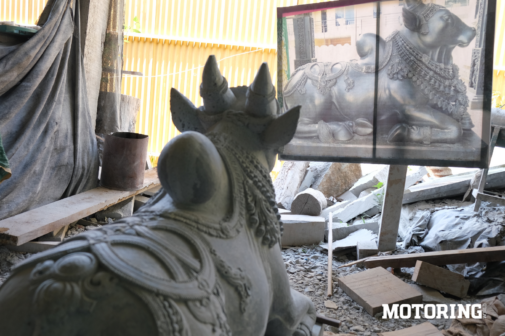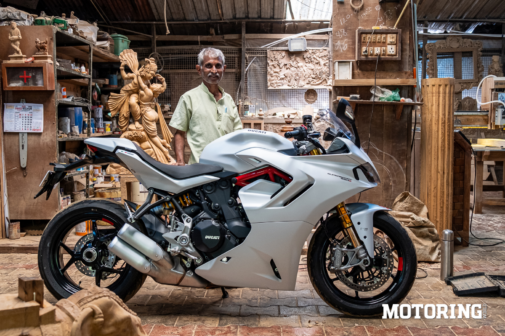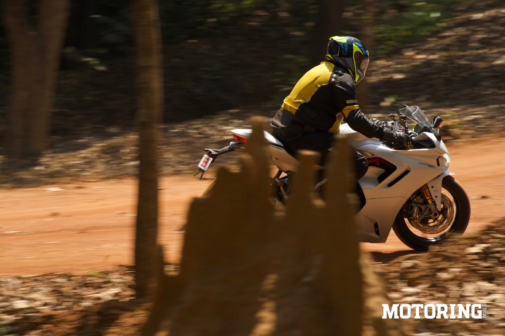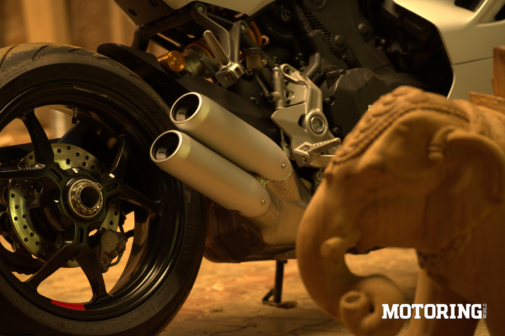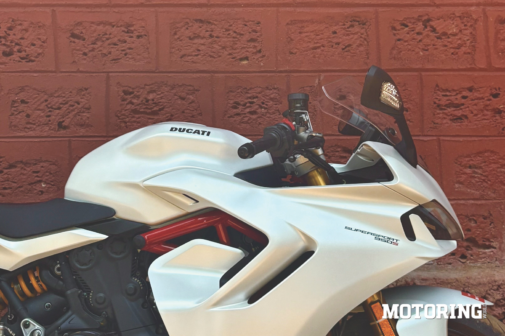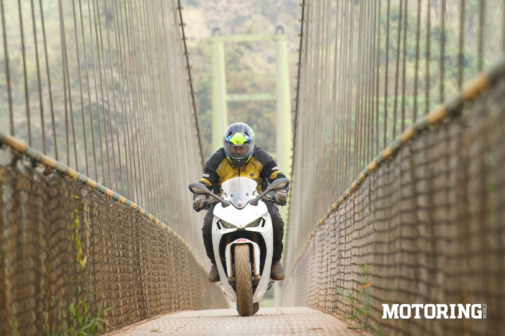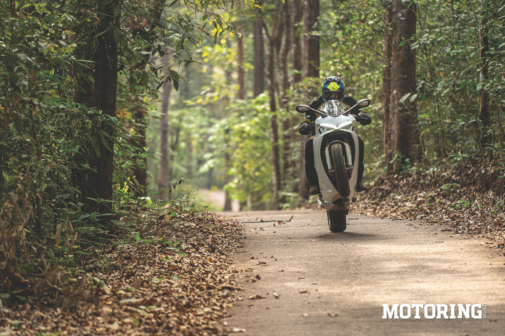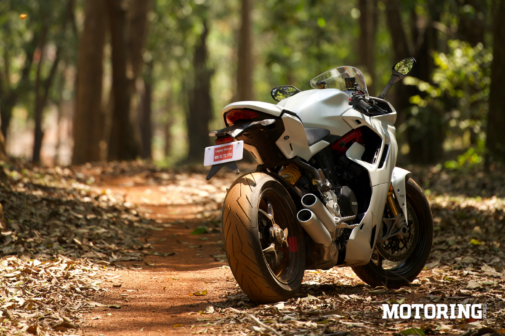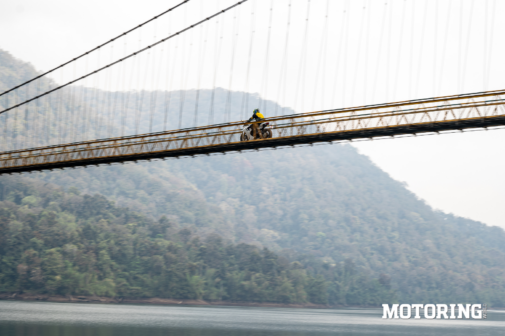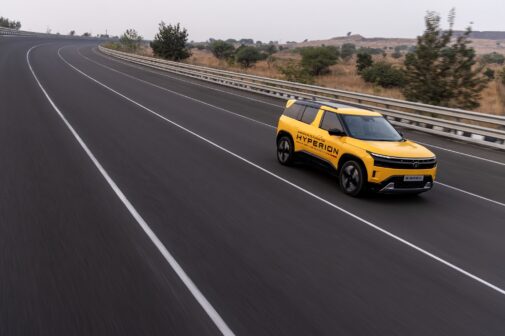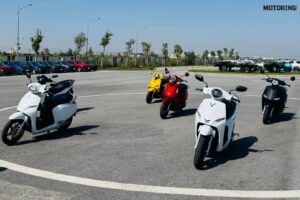I may not look it, but I think I’m a bit young to know much about finesse. It takes a great degree of obsession and commitment before finesse becomes a part of your arsenal. It took the late Massimo Tamburini 50 years before he could come up with the Ducati 916, for example. Even then, it’s not as if he stopped because, only five years later, he then came up with the MV Agusta F4. Finesse, clearly, is no fluke.
You will, therefore, understand why I have rarely felt more out of place than I did now, in the company of a very fast Ducati (there’s a redundancy, if there ever was one) parked within the nondescript confines of the Bikku Gudigar Kala Kendra in a small town called Yellapur in the state of Karnataka. Sandwiched between maestros from wildly different universes, it very quickly descended upon me that I was extremely under-qualified to be here.
Over the years, my conditioning has been coded, largely thanks to Motoring World itself, to accept Ducatis as among the world’s most beautiful motorcycles. I’ve never felt the urge to debate that claim, even as I compulsively reserve the widest of my yawns for the Diavel, a motorcycle I have never understood the point of. There are days when I toy dangerously with the idea of bringing a faired Ducati home (anything except a red one should be illegal) and, on others, I feel like owning two. The SuperSport 950S is one of them. In my book, it’s an almost-Panigale level of motorcycle and, when the opportunity to ride one presented itself, I didn’t care so much about why it came painted the same shade as a mausoleum. It’s effortlessly beautiful, down to its last Ducati-branded bolt.
I was, therefore, expecting a staggering contrast on seeing the SuperSport against the backdrop of what is, arguably, among the greatest examples of traditional Indian art. It’s not so much an example as it is a legacy that runs so deep, most of its history exceeds the confines of documentation. The Gudigar family of temple artisans, you see, is among India’s most revered in the field of wood carving and sculpture. Committed to an overwhelmingly intricate design philosophy, the low-profile Gudigar family’s work over the years has seen it attain a virtually holy status.
Undoubtedly, an air of piety filled the tin-roofed workshop as Santosh Bikku Gudigar, the ‘Guruji’ of the Gudigar family, walked in to inspect the Ducati we’d wheeled in — having first taken our shoes off outside, of course. Small-framed — almost like a MotoGP rider, you could say — and incredibly soft-spoken, Guruji walked around the SuperSport, absorbing the nuances of its design while the rest of us observed in a heavy silence. I couldn’t tell if he was impressed, his motorcycling pursuits being reserved to riding a scooter in his younger days, but if his intent gaze was anything to go by, you could say it piqued his interest. I instinctively offered him a short spin on it which he brushed aside with a laugh. With the ice now broken, we were welcome to stay.
Can an artist appreciate and be enamoured by the work of another? ‘All the time,’ he answers, reeling off names of artists hailing from places you’d struggle to find on a map. ‘The work we do here is, for us, the only purpose with which we’ve come into this world. Quite a few of us have gone on to explore other avenues but, one way or another, we find our way back. It’s the only world we belong to.’ Early on, I get the impression that Guruji sees himself as no more than an artist, caring very little for his reverential status. The conversation thereafter flows easily.
‘Each piece we create takes us several weeks and, in some cases, even months,’ he explains. It’s a seriously dedicated art form, strung together with discipline and faith. Over the years, the Gudigar family has contributed to idols and temple architecture across the world, with its most incredible works having been installed across the temples and homes of India and even as far as in New Jersey. With a legacy to live up to and, equally, pass down to the next generation, it surely must be tedious work, right? ‘It would be, if we didn’t treat it as a privilege,’ he says. ‘Everything we do begins with a prayer — the pen follows soon after.’
The Bikku Gudigar Kala Kendra (centre of arts, translated), named after the family, was founded in 1989 and the entire family is engaged in — and committed to — the tradition of making masterpieces in wood and stone. While wood is the material of choice for most of their pursuits, it’s the stone sculpture that appears more challenging.
The Guruji has a philosophical and unintentionally poetic take on this. ‘A rock leads no life of reverence. For decades, it lies unattended to, under the harsh sun, being lashed by rain, with people littering or defecating around it. Then, when we are in its possession, it’s not as if we are any kinder to it — for months, it undergoes a violent transformation with hammers, chisels, you name it… until it reaches a point where it can no longer be attacked. When our work is completed, it can only be worshipped. Then, no ill can be spoken of it, no wrong can be done to it. It’s a lot like the life of man, when you think of it,’ he says, delivering effortlessly why he is a true master of his art.
Each work in stone can take up to several months of uninterrupted labour and the monstrosity of the task begins from the selection of the rock itself. Indeed, to the untrained, all rocks are equal until you see one crack before your eyes, after months of toil. ‘How do you ensure precision and accuracy?’ I ask him, seeing as working with stone is an irreversible process, offering no room for error. ‘Through prayer and a state of absolute surrender,’ comes the answer.
***
Precision, across worlds, has its roots in the same things, as it turns out. We look at Ducatis as motorcycles born to deliver, unquestioningly, on speed and beauty, but have you ever taken a moment to pause and think about those who make them? What level of confidence, of trust in what you have created do you need to possess before you can step away and say, ‘Right, anyone in the world can now know what 300 kph feels like.’ You have to be an absolute master — completely certain of your craft — to be able to entrust the world with your entire legacy. Also, if you’ve followed Ducati’s progression over the years, you know it doesn’t just stop at getting it right — it has planted a benchmark in almost every single segment it makes motorcycles for.
I couldn’t shake off that thought as I attempted to clumsily hoist the SuperSport’s wheel on a narrow track leading to the spectacular Shivapur bridge on a misty morning. The 110 bhp its 937cc Testastretta L-twin produces makes itself loud and clear in the forest-ey bits‑ I was certain the wildlife that wanders around in these parts was fully aware of the Ducati’s presence. They opted to stay clear, too, fortunately. I could never get over the feeling of how out of place the SuperSport looked in this setting, although it didn’t feel as extraterrestrial from behind its ample windscreen. For considerable stretches, the road disappeared altogether, but the SuperSport didn’t protest in the least as long as I kept its gorgeous wheels off the pointy bits.
Perhaps I’m a bit out of touch, but the SuperSport feels very powerful. It’s amazingly friendly, but still very capable of unsettling you if you’re careless. Fortunately, I fall conveniently short on bravado these days, so I remained firmly lodged in the Ducati’s comfortable seat. In these endlessly twisty and unevenly surfaced bits apt for a 100cc two-stroke, riding the SuperSport did feel like a thorough workout (Okay, I have no idea what a workout feels like), but since I have no incident to report, I’ll rate it handsomely on its approachability.
That’s not to say I hadn’t given it the road-tester drill earlier. With all electronic interventions turned off, wheelie control included, the 200- odd km ride from Goa to Yellapur had been a blur. I remember nothing of the coast-hugging highway and just enough about the twisty uphill bit to know I’d had fun. Down that route, under a punishing sun, the SuperSport had felt silly fast! Speed comes easily to it, especially with that banger of a quickshifter-equipped gearbox. And it does nothing to betray its 210-kg kerb weight. The unexpectedly brisk dash down the coast had helped make my mind up. I want one as much as I’m doing to do nothing about it.
***
Isn’t art purely the domain of the affluent, though? It’s an indulgence, surely. An extravagant interpretation of something simple, if you look at it objectively. It’s the artist — through layers of thought, imagination and devotion — that elevates art into something universally relevant. That’s what makes art transcend time and social strata and worlds as seemingly far apart as, in this case, sculpture and motorcycles. My expectation of a contrast in bringing a Ducati to the Gudigars was, in hindsight, completely misplaced. In reality, all art is so intensely personal, it can be nothing less than divine.
***
We’d like to thank the Gudigar family and our dear friend Jayanth Mavalli for their generosity and for making this story happen.










